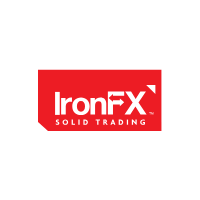When it comes to trading on the IronFX platform, one of the most common questions traders have is about the nature of the spread. Is it fixed or floating? Understanding this aspect is crucial for anyone looking to trade on this platform, as it directly impacts trading costs and strategies. In this article, we will explore what the spread is, how it works, and whether it is fixed or floating on IronFX.
Understanding the Basics of Spread
The term 'spread' refers to the difference between the buy (bid) price and the sell (ask) price of a financial instrument. It represents the cost of executing a trade and is a key component in determining the profitability of a trade. Traders need to be aware of whether the spread is fixed or floating because each type has different implications for their trading strategy and overall costs.
Fixed vs. Floating Spreads: What’s the Difference?
A fixed spread remains constant regardless of market conditions. This means that the difference between the bid and ask prices does not change, providing traders with predictable trading costs. On the other hand, a floating spread varies depending on market volatility and liquidity. As market conditions fluctuate, so too does the spread, which can lead to more variable trading costs but may also offer opportunities for tighter spreads during periods of high liquidity.
IronFX Platform: What Does It Offer?
For those trading on the IronFX platform, the spread is typically floating. This means that the spread will adjust based on real-time market conditions. The platform offers competitive spreads across various asset classes, including forex, commodities, indices, and cryptocurrencies. While the spread may vary, IronFX aims to provide tight spreads during peak trading hours when liquidity is highest, potentially allowing traders to benefit from lower trading costs.
Factors Influencing the Floating Spread
The floating spread on IronFX is influenced by several factors, including market volatility, economic events, and overall market liquidity. During times of heightened volatility, such as when major news events occur, the spread may widen to reflect the increased risk. Conversely, during periods of low volatility and high liquidity, the spread tends to tighten, offering traders the potential for reduced trading costs.
How Does This Impact Traders?
Traders who prefer predictability might find the floating spread challenging to manage, as it introduces an element of unpredictability into trading costs. However, for experienced traders who are adept at managing risk, a floating spread can offer opportunities for better pricing during favorable market conditions. It's important for traders to monitor market conditions and adjust their strategies accordingly to take full advantage of the floating spread offered by IronFX.
Conclusion
In conclusion, the spread on the IronFX platform is generally floating, meaning it adjusts according to market conditions. While this provides flexibility and potential cost savings during optimal times, it also requires traders to be more vigilant and adaptable in their approach. By understanding the nature of the spread and its impact on trading costs, traders can make more informed decisions and tailor their strategies to suit their individual needs.













